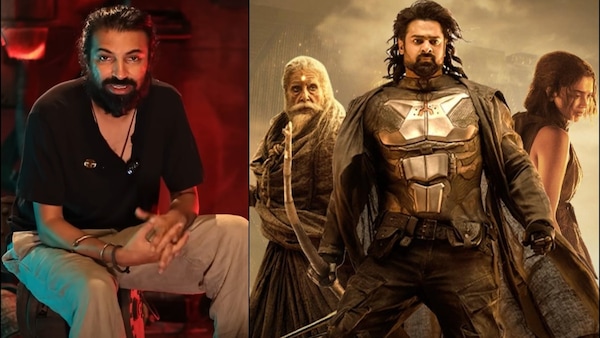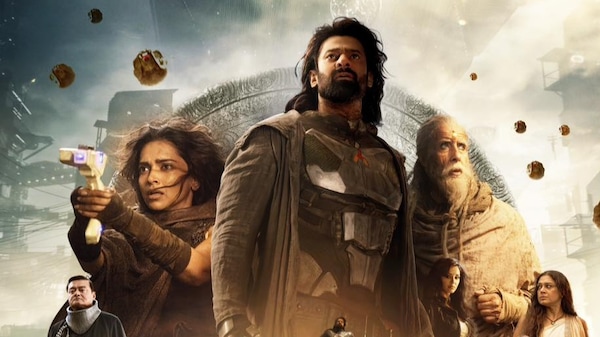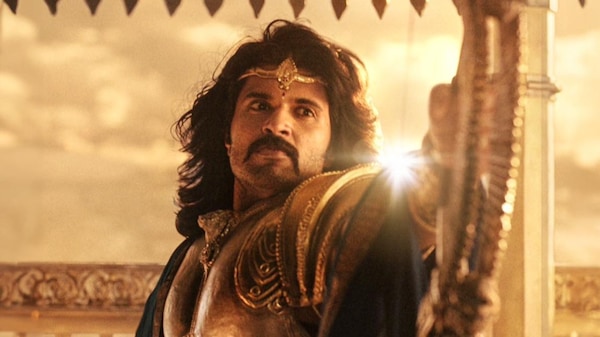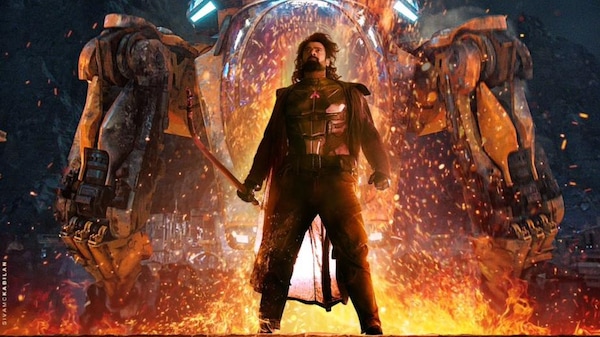Nag Ashwin: Kalki 2898 AD draws more from the present than the future | Exclusive
Kalki 2898 AD director Nag Ashwin opens up about the challenges and success of the Prabhas and Amitabh Bachchan-starrer, the Star Wars and Mahabharata references and more

Last Updated: 04.28 PM, Jul 10, 2024
Over eight years ago, during a Tedx event at Jawaharlal Nehru Technological University, Kakinada, Andhra Pradesh, director Nag Ashwin shared his ideas about changing the world. He introduces himself as a filmmaker, who brings ideas together and presents them to the world. In the course of the talk, he also touches on several scientific topics. Cut to 2024, the filmmaker is now basking in the success of this year’s highest-grossing Telugu film, Kalki 2898 AD, which has combined elements of the Mahabharata mythology with science fiction while presenting a first-of-its-kind big-budget sci-fi film that is relatable to the Indian audience. While it might not change the world, the film will arguably have a huge role in changing the landscape of sci-fi films in India.
As Kalki 2898 AD, which has Prabhas, Amitabh Bachchan, Kamal Haasan and Deepika Padukone, is set to breach the Rs 1000 crore barrier in worldwide box office, Nag Ashwin is still his usual self. There’s more relief than excitement, he says, “For sure, we are happy that the work has been appreciated and welcomed.” Excerpts from an exclusive OTTplay interview:

Kalki 2898 AD’s success has just proven that a sci-fi film can actually work in India. Personally, what’s the biggest change since you began working on the film and now?
It would sound strange, but not too much has changed. When you are making a film, you are so in it that you are always trying to see the final product and purpose of it - even when you are writing it. When it releases and becomes a reality, the thoughts that you carried all these years are just coming true. So, there’s not too much of a change that way.
The only thing that has definitely changed though is that it has brought me a lot of relief. The fact that a big budget sci-fi film can actually be profitable is a big achievement because it’s not connected to just me or the producers, but the entire film industry. If it doesn’t work, it closes the doors for some many other dreams and if it does, it opens several other possibilities, be it mythological or sci-fi films. So, there’s that relief and satisfaction that we pulled it off.
The movie had an underlying Star Wars theme going; that said when George Lucas decided to make the first Star Wars film, the first thing he assembled was a team of people who were united in seeing his vision through in spite of all the challenges. Did your confidence also stem from having the producers who backed you all the way?
For sure. The producers and the actors. Just the fact that the most sought-after and experienced actors in our industry liked the idea of Kalki 2898 AD and came on board was a huge boost. For them, the main criteria is to like the concept and their characters; there are innumerable people who can give them a paycheck.
Even though it’s a sci-fi film, Kalki 2898 AD is rooted to the mythological elements that had the potential to resonate across the country. Did that also give you the confidence to go ahead with such a film?
I don’t know if we thought about it so much. We genuinely felt that as a story, the Mahabharatha is universal in nature. That did give us confidence. The opening of the film, the Kurukshetra sequence, was organic to the story and we felt it would connect to audiences anywhere in India. Even the remotest parts of the country have their own version of Mahabharata and its stories. So, though we knew it would connect, we didn’t know to what extent till we released the film.

Do you think that the timing of the film’s release also helped to a certain extent, because several big-screen Telugu movies including RRR, Pushpa and Salaar: Part 1 had got pan-Indian acceptance?
I guess so, but I also think people had proved that as early as Baahubali. Even earlier, in the 1950s, when we made Mayabazar (1957) in Telugu, people thought that it was going to be the biggest failure.
When I was talking to (filmmaker and screenwriter) Singeetam Srinivasa Rao sir, he said the entire industry was telling its producers Vijaya Productions that the film was going to be the end of them; because they had spent so much, it was a Mahabharata spectacle sort of film and it was treated in a comic manner. But the audience came out. They came to theatres in the 1950s, supported it and they made it a massive hit that people still talk about it 70 years later. So, the audience has always been ready; the only differentiator is whether we do our jobs well or not.
A lot of people had also drawn parallels to several Hollywood films including Star Wars and Mad Max. How do you react to that, considering that your film is a first-of-its-kind sci-fi attempt in the country and has definitely raised the bar for other such films?
We are all exposed to so much content in terms of production design, CGI and other aspects. Then there’s also the subconscious influence; for me, the whole rusted and aged aesthetic is something that I would have consciously or subconsciously borrowed from Star Wars for sure.
Everything else is just the same anywhere. For instance, if you think of a dystopian place without water, you are going to have a deserted landscape. If that similar desert is there in other movies, some people don’t get over that. But those comparisons are very superficial.
Kalki 2898 AD also presented the vast divide between the people, where you have the Complex and those outside, fighting even for a bite of an apple. Do you borrow that from what you think is a perceivable future in the world we live in right now?
This movie draws more from the present than the future. If you see the world of Kalki 2898 AD, there’s an extreme divide between the people. On one side, you have those who would literally die for a bite of an apple and inside the Complex, there are people living in excess for no reason. So, it already exists. I was just placing it in a futuristic world. It was my failure to imagine how much worse it could get, because we are already here.
The action sequences in the movie were widely lauded . How extracting was that, considering it also needed to tie in with the story and required a lot of CGI?
I was fully into it. It was also the most complicated part of the film because as you said, it involved action, CGI, story and characterisation. It can’t be just about two people fighting. Ashwatthama fights a certain way, Bhairava has his own style; you have to account for the strength or the technology that they use. Also, there’s so much VFX involved as they can never fight together because of the height difference.
All of this needed to be designed on pre-viz and even though it was tough to shoot. Doing the action scenes was a huge learning curve.

From presenting the film at Comic Con, to working with stalwarts such as Amitabh Bachchan and Kamal Haasan to the kind of world building that has gone into Kalki 2898 AD, did this venture tick off a lot of the items on your bucket list as a filmmaker?
Definitely. It’s also because this was the most ambitious project I had in my head. Every other story I have is probably nothing compared to this. So, I had to pull out all the stops - be it Comic Con, the VFX, the casting. This was the climactic sort of thing that I had to do.
Subscribe to our newsletter for top content, delivered fast.

